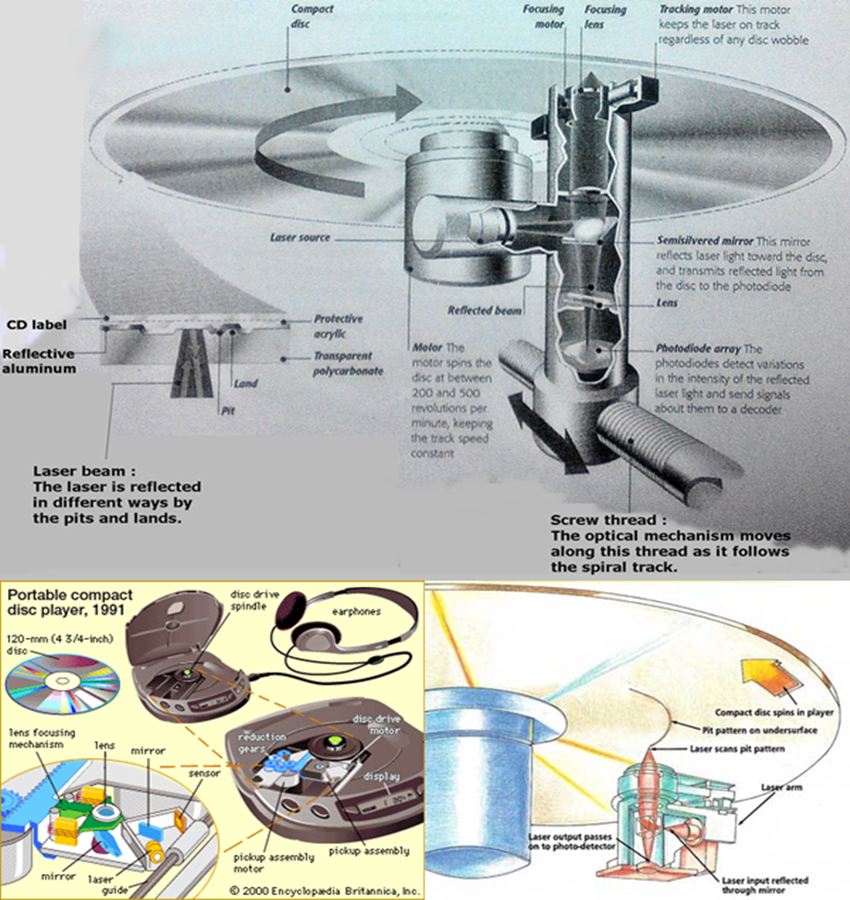Music to your ear (Tia liao jing song)
Sound Recording
=============
Sound recording is the process of converting pressure waves in air (sound) into electric
signals for storage as magnetic or physical patterns in a medium such as magnetic tape,
vinyl record, or compact disc. In analog recording, a copy (analog) of the continuous sound
wave is created in the recording medium. Digital recording converts the continuous wave
into binary code of discrete pulses.
During recording , sound waves from a traditional instrument or voice must be converted
into an electric signal by a microphone, while electronic instruments, such as synthesizers,
can produce an electric signal directly. An analog electric signal is theoretically an exact copy
of the original sound wave, while digital code is only a sampled approximation. However,
digital audio has many practical advantages. Digital coding systems are designed to carry
information in addition to sound , such as error-correction data. In addition, digital copies
are identical to digital originals, which means that tracks can be copied repeatedly without
deterioration.
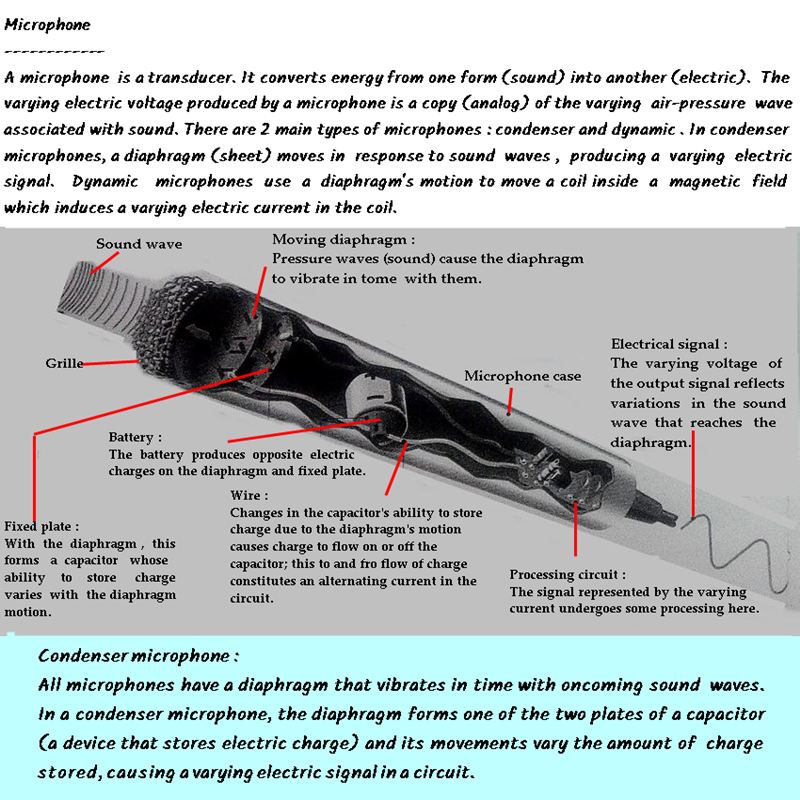
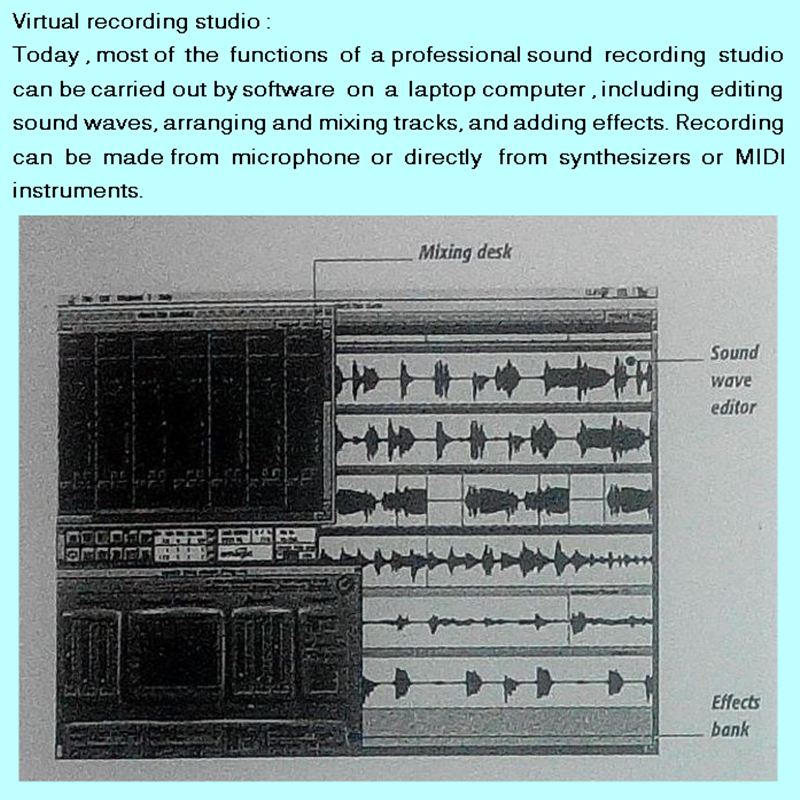
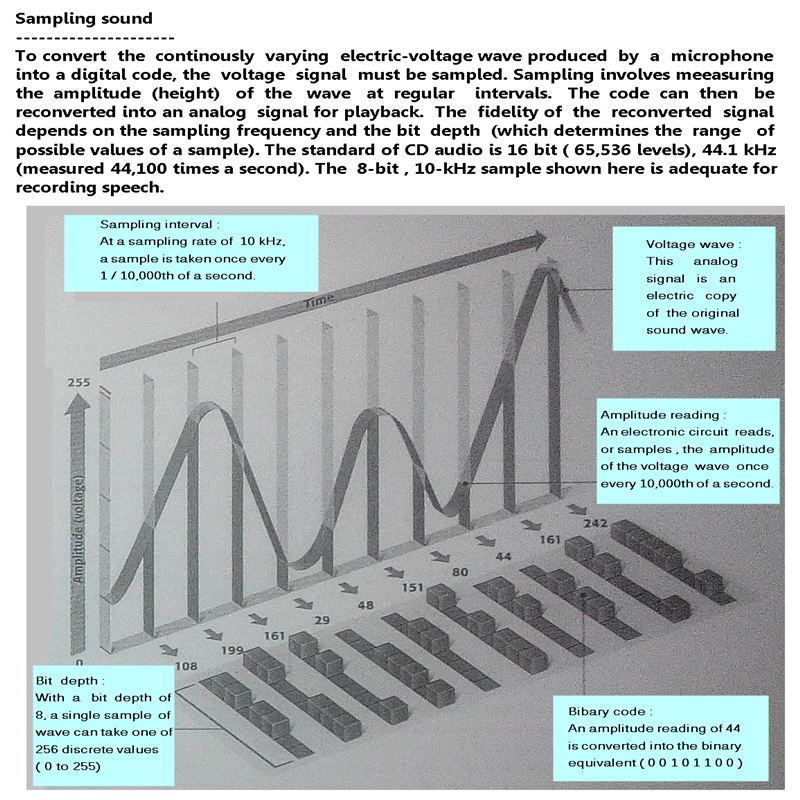
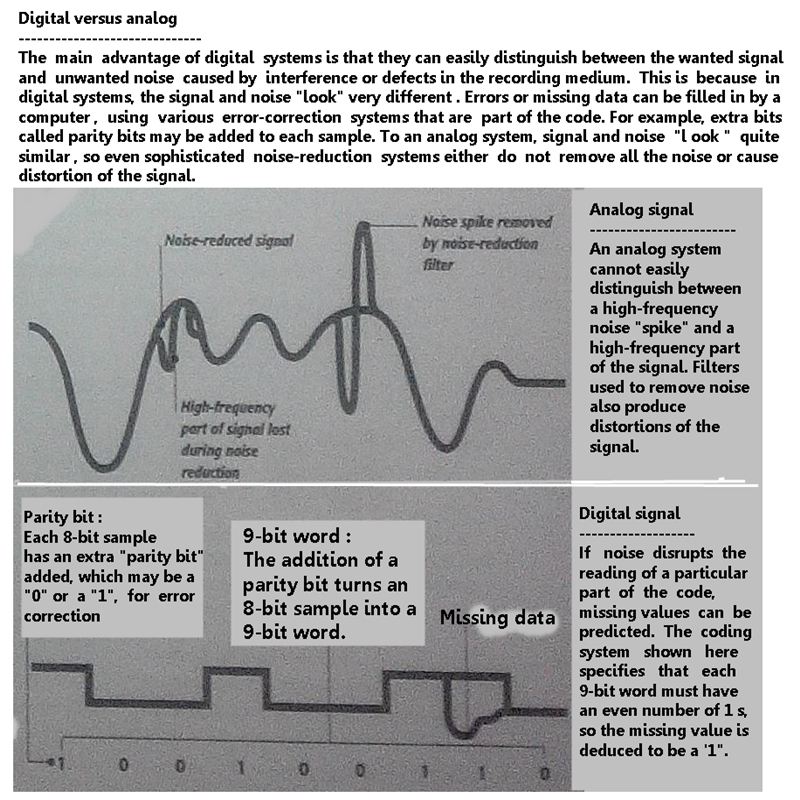
Sound reproduction (Part 1 : DML (Distributed mode loudspeakers)
--------------------------------------------------------------------------------------------
DML built-in wall panel :
-------------------------------------
The latest flat-speaker technology called distributed mode loudspeakers (DML),
uses an extremely stiff, thin panel vibrates in a complex way, unlike in a
conventional speaker, where a cone moves in and out like a priston. DML units
do not need an enclosure (box) , and they fill a room more evenly with sound
than conventional speakers. They can be made from various materials, even glass,
incorporating into walls and ceiling shown below picture.

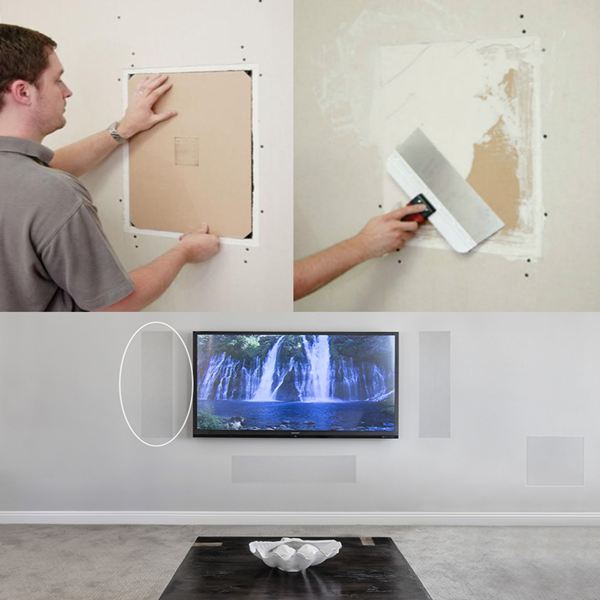
Important note : Though it looks nice to have DML built-in wall but the downside could causes
your wall paint to fall off due to long-term vibration. It will be best to have
a flat box DML instead.
Also, DML excitor which cost $19 a piece isn't good enough to have the best
sound effect . You need to add a "woofer" to enhance the base with DML
excitors. Excitor is just a "tuner" or "tweeter" which is a high frequency wave .
Do Not waste $2,000 to $4,000 to purchase a DML .
It only cost $19 with very POOR sound effect.
Sound Reproduction (Part 2 : Speakers )
==============================
Most hifi speaker unit use two moving-coil driver units ; a "tweeter" for high frequencies and
a "woofer" for low frequencies. They are enclosed within specially designed cabinets that
incorporate damping material to absorb unwanted vibrations. An alternating electrical current
from the amplifier that represents the sound signal is sent to a crossover circuit in the cabinet .
This sends high frequencies to the tweeter and low frequencies to the woofer. The varying
electrical signals cause the driver unit's coil to move, creating varying pressure (sound) waves.
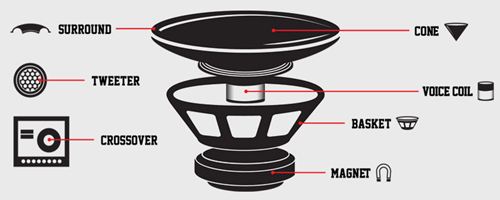
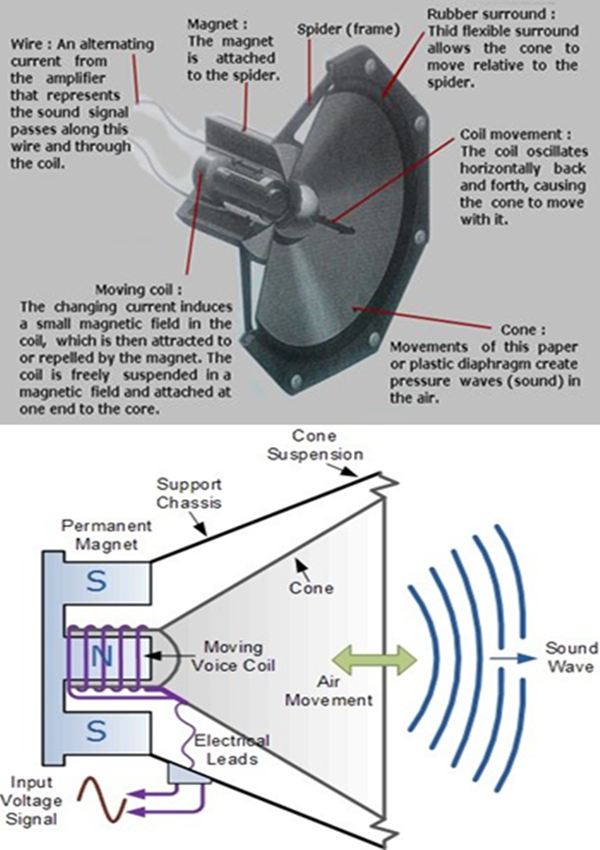
https://soundcertified.com/how-do-speakers-work/
Moving-coil speaker :
------------------------------
A moving-coil speaker converts electrical currents into sound
through the magnetization of a wire coil connected to a flexible
diaphragm.
Sound Reproduction (Part 3 : Record player cartridge )
========================================
Reproduction of recorded sound requires a media player to convert the physical or
magnetic patterns on the recorded media into an electric signal, an amplifier to boost
the signal from the player , and speakers to convert the signal into sound waves.
If the recording medium is digital , a digital/analog converter is needed to change the
signal into analog form before it can be amplified.
Record player cartridge :
---------------------------------
A vinyl record stores the two channels of a stereo sound signal
as waveline contours in the walls of a spiral groove. A cartridge at the end of the record
player tonearm detects the contour variations with a diamond-tipped stylus, which moves in
two perpendicular directions as it follows the inner and outer groove walls. The movements
of the stylus cause an attached magnet to move within two sets of coils, inducing separate
electric signals in them for the left and right channels. Some cartridge use a moving coil and
fixed magnets instead.
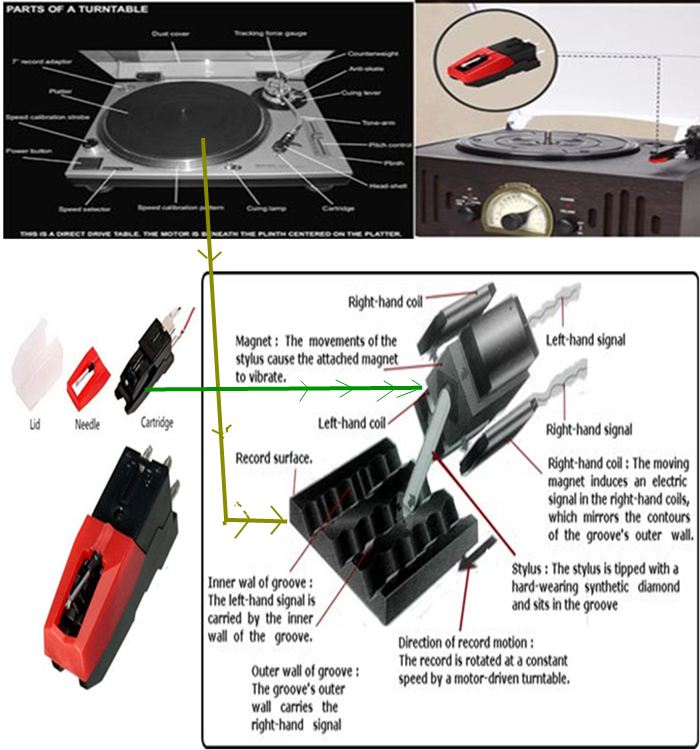
Sound Reproduction (Part 4 : Compact disc )
====================================
Ideally, sound reproduction equipment recreates the sound exactly as originally
recorded. An amplifier must boost the level of the electric signal from the record ,
tape, or CD player without introducing unpleasant distortion. Most amplifiers
accomplish this using transistors, but amplifiers based on older vacuum tube
technology are prized by some for the "warmth: of their sound. The final
component in the reproduction chain is the loudspeaker. Speakers are transducers.
They convert electric energy into sound energy, and work like microphone in reverse.
Most speakers use moving-coil technology. "Flat" speaker designs were once usually
based on electrostatic technology and operated like condensor microphones in reverse,
but the latest flat designs use a new "distributed mode" speaker technology.
Compact disc :
-----------------------
The compact disc is a 5 in. (12 cam) diameter plastic disk that can hold
approximately 74 minutes of 16-bit stereo sound, sampled at 44.1 kHz. The sound data is
stored in the form of about 3 billion "pits: in a single spiral track that starts at the center.
A typical pit is 1/40,000 in (1 micrometer) long.
CD player :
----------------
Information is stored on a CD as a series of pits. Pits and lands (the areas in
between) represent the digital sound data. In the player, a laser beam is focused on the
track from beneath the disc and reflected back to a detector. The varying intensity of this
light (caused by the pattern of pits and bumps) is converted into an audio signal.
